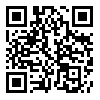BibTeX | RIS | EndNote | Medlars | ProCite | Reference Manager | RefWorks
Send citation to:
URL: http://intjmi.com/article-1-535-fa.html
Background: The aim of this study was structural equations modeling of Tendency to critical thinking, problem solving skills and self-esteem among female students.
Method: The research method was descriptive-correlation type. 175 female students of sixth grade elementary school in Tehran who were studying at one of the elementary schools in the academic year of 97-96, selected using cluster sampling as a sample group. Data were collected using Cooper Smith's self-esteem questionnaire, Heppner's problem-solving skills questionnaire, and California Critical Thinking Inventory. Data was analyzed using descriptive statistics (mean, variance, standard deviation) and using SPSS 22 software and Amos 23 software were used to investigate structural equations model.
Result: According to the results of structural equations, the direct effect of the problem-solving skills construct on self-esteem was calculated to be 0.410, which means that the problem-solving skills construct can predict students’ self-esteem. Also, the tendency to critical thinking directly and indirectly (through problem-solving skills) affects self-esteem. The standardization direct and indirect effects of critical thinking on self-esteem were 0.488 and 0.173 respectively, and its overall effect on self-esteem structure was calculated to be 0.661. These results indicate a significant structural relationship between the tendency to critical thinking and self-esteem and the tendency to critical thinking predict self-esteem. So, students who are more inclined towards critical thinking style have higher self-esteem.
Conclusion: In clarifying the above hypothesis, it can be said that children and adolescents who learn problem-solving skills well are more likely to show a high level of self-esteem because they have more positive concept of themselves, and this causes them to evaluate, understand and accept their limitations and abilities in a more correct way, and finally find their true identity
| بازنشر اطلاعات | |
 |
این مقاله تحت شرایط Creative Commons Attribution-NonCommercial 4.0 International License قابل بازنشر است. |
